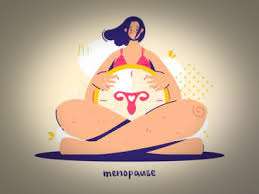Alternative medicine refers to a range of medical practices that are not typically considered part of conventional medicine. These practices include complementary and alternative medicine (CAM), which are used alongside conventional medical treatments to support overall health and well-being. In this article, we’ll explore some of the most common complementary and alternative approaches to medical treatment.
What is Complementary and Alternative Medicine (CAM)?
Complementary and alternative medicine (CAM) is a broad term that includes a range of medical practices and treatments that are not typically part of conventional medicine. These practices include:
- Acupuncture: An ancient Chinese practice that involves inserting thin needles into specific points on the body to promote healing.
- Chiropractic: A practice that involves manipulating the spine and other joints to treat musculoskeletal problems.
- Herbal medicine: The use of plants and plant extracts to promote healing.
- Massage therapy: A practice that involves manipulating muscles and other soft tissues to promote relaxation and reduce pain.
- Mind-body practices: Techniques that involve the mind, such as meditation, yoga, and tai chi, to promote relaxation and reduce stress.
- Energy therapies: Practices that involve manipulating the body’s energy fields, such as Reiki and acupuncture.
Benefits of Complementary and Alternative Medicine (CAM)
Complementary and alternative medicine (CAM) practices have been shown to offer several benefits, including:
- Improved overall well-being: Many CAM practices are designed to promote overall well-being, reducing stress and improving mental and physical health.
- Reduced pain and inflammation: Some CAM practices, such as acupuncture and massage therapy, have been shown to reduce pain and inflammation.
- Improved sleep: Mind-body practices like meditation and yoga can promote relaxation and improve sleep.
- Reduced side effects of conventional treatments: Some CAM practices, such as acupuncture, can be used alongside conventional treatments to reduce side effects.
Risks of Complementary and Alternative Medicine (CAM)
While complementary and alternative medicine (CAM) practices can offer several benefits, there are also some risks to consider. These risks include:
- Interactions with conventional treatments: Some CAM practices can interact with conventional treatments, reducing their effectiveness or causing side effects.
- Lack of regulation: Some CAM practices are not regulated by the same standards as conventional medicine, meaning there may be little oversight of their safety and efficacy.
- Inaccurate information: There is often a lot of misinformation about CAM practices, making it difficult to know which treatments are safe and effective.
Conclusion
Complementary and alternative medicine (CAM) practices offer a range of approaches to medical treatment that can support overall health and well-being. While there are risks associated with some CAM practices, there are also many benefits to be gained from these treatments. If you’re considering using CAM practices, it’s important to do your research and consult with your healthcare provider to ensure that you’re using safe and effective treatments that complement your conventional medical treatments.









